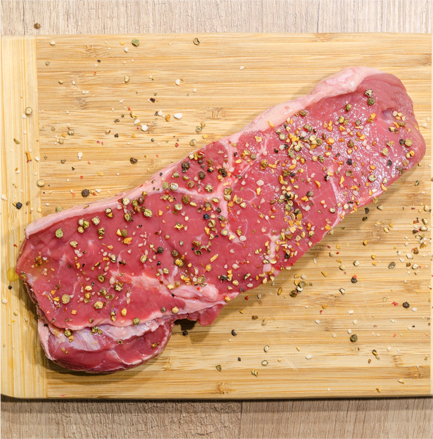Feb 28, 2020 by Mark Dingley
African Swine Fever is on Australia’s doorstep. Quite literally – the deadly virus was detected in Timor-Leste, just 680km north of Darwin, in October last year.
The fear of an outbreak in Australia is very real, and it could devastate the Australian pig market.

African Swine Fever (ASF) is a fatal pig disease that’s been around since the 1950s.
It originates in sub-Saharan Africa and has also been detected in countries in Eastern Europe, such as Russia and Ukraine. Today’s global market makes it more easily transmissible, which is why, in 2019, the disease swept down through Asia and towards Australia.
The problem is there’s currently no vaccine or cure. As a result, ASF kills about 80% of the pigs it infects and wiped out more than a quarter of the world's pig population last year alone.
One of the biggest contributors to ASF is swill feeding, which is where pigs are fed food waste (including meat products) in which the virus can survive for a long time. This is a common practice throughout Asia
According to a report by the Australian pork industry, a worst case scenario could cost up to $2.03 billion to the economy. Australian pork exports would grind to a halt and domestic pork sales would plummet by 25% in just the first six weeks.
The good news is the industry is working hard to prevent an outbreak, and for now it’s been working.
But that doesn’t mean there are no implications.
In fact, ASF has significant implications for Australian meat exporters in 2020 and beyond. Australia has a $5.3 billion pork industry with 2,700 producers and is currently free from the disease.
As Australian Pork Limited chief executive Margo Andrae told The Australian, “Australia is ASF-free but we are seeing the biggest global destruction of protein in history. Twenty-five per cent of the pork protein has gone, and that’s having a big impact.”
To understand the impact, we need to look at China.
Chinese Government statistics indicate a 26% year-on-year decline in its national pig herd as at 30 June 2019 with some estimates as high as 40%.
This will have a major impact on global agricultural markets. Pork is the most consumed meat in China, with the country making up around 50% of global pork consumption.
Until ASF struck, China had around 50% of the global pig herd.
To fill the gap, there’s been an increase in Chinese pig meat imports, which has mostly been filled by the EU and the United States.
It’s anticipated that Chinese import demand will grow even more in 2020. The result? There’s less meat to go around and global pig meat prices will rise. Pork and other red meat prices are already increasing in Europe and Asia.
Higher pig meat prices have another implication. They could encourage Chinese consumers to shift to alternative protein sources, such as poultry, fish, beef and sheep meat.
What does this mean for Australian exporters?
The interesting thing is exports account for only 10% of production for the Australian pig industry. Australian production isn’t even enough to meet domestic consumption, let alone Chinese consumption. Around half of the pork we eat in Australia is sourced from imported processed products from the European Union and the United States, which are also China’s biggest sources of pork.
With African Swine Fever increasing Chinese import demand and global import prices, this will drive up prices for imported processed product in Australia too. Meanwhile, the expected increase in global prices means Australian pig meat probably won’t be competitive internationally.
That’s the bad news.
We talked before about Chinese consumers looking to other sources of protein. This is where the Australian beef industry is expected to benefit.
There’s a soaring demand for meat exports in China.
Australian beef exports to China are at record highs, up 73% year-on-year for the nine months to end-September. Most of this came from lower-priced frozen beef exports – a more affordable substitute for pork than fresh beef or lamb.
Exports to China are forecast to continue to grow in 2019–20 with China expected to become Australia's second-largest market for beef after Japan.

Things are looking positive for sheep meat too.
In September 2019, there was a surge in total lamb export flows and total mutton flows from Australia to China.
The combined flow of mutton and lamb to China was at almost 100,000 tonnes swt – 30% of Australia’s total export flows of sheep meat for that season.


It’s more important than ever to make sure your products tick all the regulatory boxes. One of these is DAWR or Export Control Marks.
Controlled by the Department of Agriculture and Water Resources, DAWR or Export Control Marks are marked labels applied to products exported out of Australia.
Whether you are exporting meat or meat products, there are strict requirements you need to meet in order to comply with all DAWR and exporting regulations.
As an authorised manufacturer of DAWR approved marks, Matthews can help guide, print and monitor your business’s exporting marks using our iDSnet software solution.
We recommend for meat exporters to keep on top of the latest regulations and labelling rules. The recently signed China Australia Red Meat Agreement (CARMA) Memorandum of Understanding is set to lead to streamlined product specifications and labelling requirements.
Don’t let labelling be the thing that stops you from taking advantage of business growth in 2020.
Need more information about export labelling for China or other global markets? Speak to our experts.